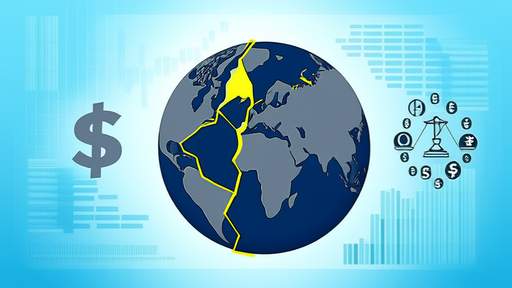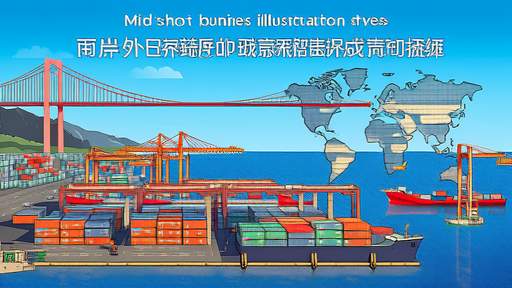The global financial system is undergoing a quiet but profound transformation as nations increasingly seek to reduce their dependence on the US dollar. This shift, often referred to as "de-dollarization," has gained momentum in recent years due to geopolitical tensions, economic uncertainties, and the desire for greater monetary sovereignty among emerging economies. While the dollar remains the world's dominant reserve currency, its share in global reserves has gradually declined from over 70% in 2000 to about 58% today.
Geopolitical tensions have served as a major catalyst for de-dollarization efforts. The use of dollar-denominated sanctions by the United States against Russia, Iran, and other nations has prompted many countries to explore alternative payment systems. Russia's development of the System for Transfer of Financial Messages (SPFS) as an alternative to SWIFT, and the European Union's creation of INSTEX for trade with Iran, demonstrate how political considerations are driving financial innovation outside the dollar system.
The rise of regional currency arrangements represents another significant development. China has aggressively promoted the international use of the yuan through currency swap agreements with over 40 central banks and the establishment of yuan clearing banks worldwide. The BRICS nations (Brazil, Russia, India, China, and South Africa) have discussed creating their own payment system and potentially a new reserve currency, though concrete progress remains limited. Meanwhile, regional powers like India are pushing for trade settlement in local currencies, as seen in the rupee trade arrangements with countries like Malaysia and the UAE.
Central bank gold purchases have reached record levels, signaling a move away from dollar-denominated assets. According to World Gold Council data, central banks added a staggering 1,136 tons of gold to reserves in 2022 - the highest annual total since records began in 1950. This trend continued in 2023, with emerging market central banks leading the charge. China, for instance, has been consistently increasing its gold reserves while reducing its holdings of US Treasury securities.
The petrodollar system, which has underpinned dollar dominance since the 1970s, shows signs of erosion. Saudi Arabia's acceptance of yuan payments for Chinese oil imports marks a symbolic break from the exclusive use of dollars in energy markets. More broadly, the expansion of non-dollar commodity trading platforms, such as Shanghai's yuan-denominated crude oil futures contract, provides market participants with alternatives to traditional dollar pricing mechanisms.
Technological developments are facilitating de-dollarization through digital means. China's digital yuan project represents a state-backed effort to create a digital currency with cross-border payment capabilities. Several countries are experimenting with central bank digital currencies (CBDCs) that could eventually enable direct currency exchanges without dollar intermediation. The mBridge project, involving the central banks of China, Hong Kong, Thailand, and the UAE, demonstrates the potential for CBDCs to reshape international payments.
Despite these developments, the dollar's position remains formidable. It still accounts for about 88% of global foreign exchange transactions and remains the preferred currency for international trade invoicing. The depth and liquidity of US financial markets, along with the absence of equally attractive alternatives, continue to support dollar dominance. Even countries actively pursuing de-dollarization often find themselves returning to the dollar during times of market stress, as seen during the COVID-19 pandemic.
The European Union has made limited progress in challenging dollar hegemony despite the euro being the world's second most important reserve currency. Political fragmentation and the lack of a unified European capital market have prevented the euro from becoming a true rival to the dollar. Similarly, Japan's yen has seen its global role diminish rather than expand in recent years.
Private sector actors are also contributing to the diversification away from dollars. Multinational corporations increasingly use local currency financing in emerging markets, while global investors are allocating more to non-dollar assets. The growth of Asian local currency bond markets and the inclusion of Chinese bonds in major indices reflect this trend. However, dollar funding still dominates cross-border lending and international debt issuance.
The long-term trajectory of de-dollarization will likely depend on several factors: the evolution of US economic policies, the development of alternative financial infrastructure, and the ability of challenger currencies to provide comparable stability and liquidity. While a sudden collapse of dollar dominance appears unlikely, the gradual erosion of its monopoly position seems increasingly probable as the global economy becomes more multipolar.
What emerges is a complex picture of incremental change rather than revolutionary transformation. The international monetary system appears to be moving toward a more diversified arrangement where the dollar shares influence with other currencies and assets, including gold and potentially digital currencies. This transition will likely unfold over decades rather than years, with periods of acceleration and reversal along the way.

By /Jun 3, 2025

By /Jun 3, 2025

By /Jun 3, 2025

By /Jun 3, 2025

By /Jun 3, 2025

By /Jun 3, 2025

By /Jun 3, 2025

By /Jun 3, 2025

By /Jun 3, 2025

By /Jun 3, 2025

By /Jun 3, 2025

By /Jun 3, 2025

By /Jun 3, 2025

By /Jun 3, 2025

By /Jun 3, 2025

By /Jun 3, 2025

By /Jun 3, 2025

By /Jun 3, 2025

By /Jun 3, 2025

By /Jun 3, 2025